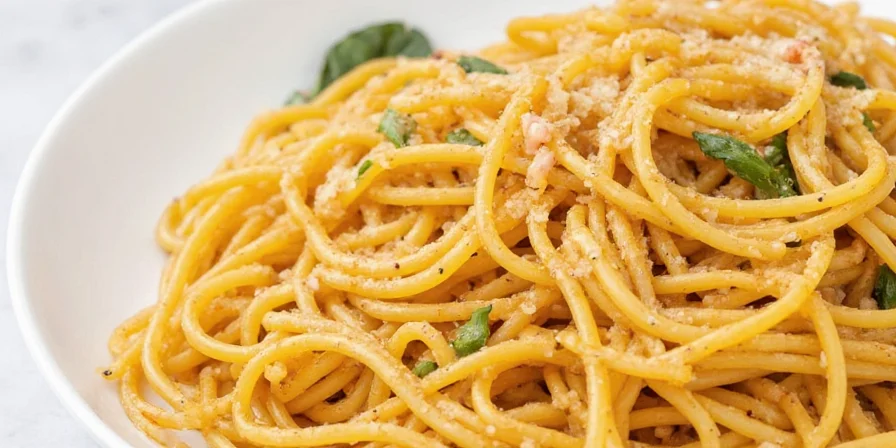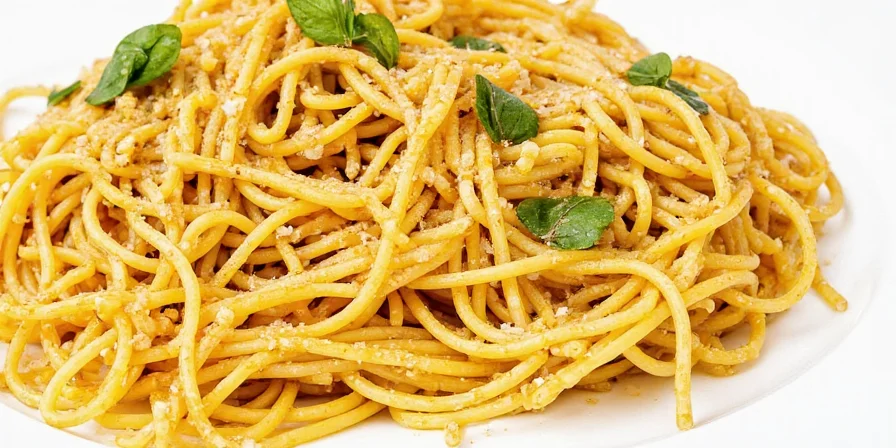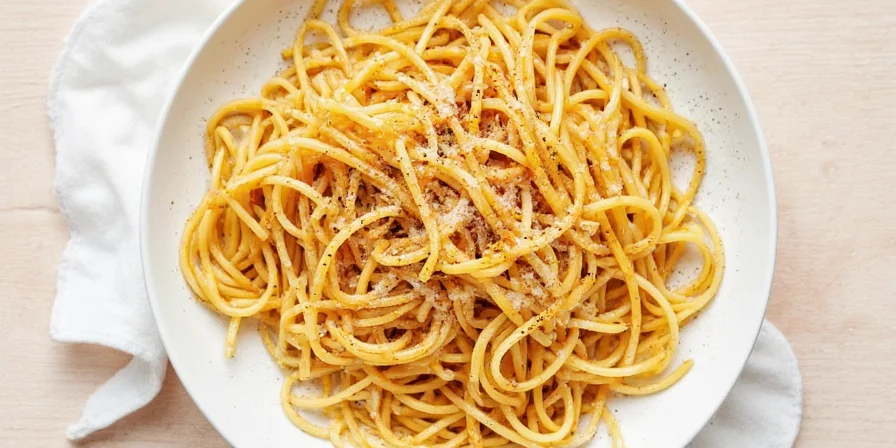Table of Contents
- Quick Start: Best Spices for Spaghetti
- Essential Spices Every Home Cook Needs
- When to Add Each Spice for Maximum Flavor
- Proven Spice Combinations That Work
- How to Fix Common Seasoning Mistakes
- Simple Global Variations Worth Trying
- Spice Reference Chart
- Frequently Asked Questions
Quick Start: Best Spices for Spaghetti
If you're looking for the best spices to season spaghetti, use this immediate solution: Add 1 tablespoon of salt to your pasta water (per gallon), sauté 2 minced garlic cloves in olive oil, then stir in 1 teaspoon dried oregano, ½ teaspoon black pepper, and ¼ teaspoon red pepper flakes. Finish with fresh basil and grated Parmesan. This simple combination delivers restaurant-quality flavor every time.

Most home cooks make spaghetti seasoning too complicated. The truth is, perfect spaghetti seasoning requires just a few key spices used at the right time. Skip the guesswork with these proven techniques that transform bland pasta into a flavorful dish in minutes.
Essential Spices Every Home Cook Needs
Forget expensive spice blends—these six ingredients form the foundation of perfectly seasoned spaghetti. Keep these in your pantry for instant flavor upgrades:
- Salt: The single most important seasoning. Use 1 tablespoon per gallon of water—pasta water should taste like mild seawater.
- Fresh Garlic: 2-3 cloves, minced (never use garlic powder as your primary source).
- Black Pepper: Freshly ground works best; add during cooking and at the end.
- Dried Oregano: Use 1 teaspoon per pound of pasta for authentic Italian flavor.
- Red Pepper Flakes: Start with ¼ teaspoon—you can always add more later.
- Fresh Basil: Tear leaves by hand and add in the last 2 minutes of cooking.

Professional chefs keep their spaghetti seasoning simple. Overcomplicating with too many spices creates muddled flavors. Stick to these essentials first, then experiment once you've mastered the basics.
When to Add Each Spice for Maximum Flavor
Timing matters more than most home cooks realize. Add spices at these exact moments for perfect results:
- Salt the water as it comes to a boil (not after)—this seasons pasta from within.
- Sauté garlic in olive oil for 1 minute until fragrant but not browned.
- Add dried spices (oregano, red pepper flakes) to the oil to "bloom" their flavors.
- Incorporate black pepper halfway through sauce cooking for balanced heat.
- Stir in fresh herbs (basil, parsley) during the last 2 minutes to preserve flavor.
- Finish with Parmesan off-heat to prevent clumping.

Adding spices at the wrong time wastes their potential. Dried herbs added too late won't release their oils, while fresh herbs cooked too long lose their brightness. This timing sequence maximizes each ingredient's contribution.
Proven Spice Combinations That Work
These three reliable combinations deliver consistent results. Each serves 4 people:
- Classic Italian (Most Popular): 3 garlic cloves + 1 tsp oregano + ½ tsp pepper + ¼ tsp red pepper flakes + 5 fresh basil leaves
- Simple Weeknight: 2 garlic cloves + 1 tsp Italian seasoning + ½ tsp pepper + Parmesan to taste
- Lemon-Garlic Bright: 3 garlic cloves + zest of 1 lemon + 2 tbsp parsley + ½ tsp red pepper flakes

Avoid common mistakes: Don't substitute dried basil for fresh in these combinations (use 1 tsp dried only if fresh unavailable), and never add dried herbs directly to finished pasta—they need cooking time to soften.
How to Fix Common Seasoning Mistakes
Ran into these problems? Here's how to fix them immediately:
- Too salty? Add ½ cup unsalted tomato sauce or a peeled potato (removes excess salt as it cooks).
- Too bland? Stir in 1 tsp anchovy paste (dissolves completely, adds umami without fish taste).
- Overpowering garlic? Add ¼ cup heavy cream or ricotta to mellow sharpness.
- Burnt spices? Start over—burnt spices can't be salvaged.
- Too spicy? Mix in 2 tbsp butter and the reserved pasta water to cool the heat.

These fixes work because they address the root cause of the problem, not just mask it. The potato trick works through osmosis, while anchovy paste adds glutamates that balance saltiness.
Simple Global Variations Worth Trying
Transform your spaghetti with these three authentic international twists that use common pantry ingredients:
- Mexican Street Style: Add 1 tsp chipotle powder + ½ cup crumbled queso fresco + fresh cilantro
- Mediterranean: Stir in 5 chopped kalamata olives + 1 tsp dried oregano + lemon zest
- Asian-Inspired: Toss with 1 tbsp soy sauce + 1 tsp sesame oil + ½ tsp ginger powder

These adaptations stay true to each cuisine's flavor principles while working with spaghetti's texture. The Mexican version uses chipotle for depth rather than just heat, while the Asian version balances soy's saltiness with sesame oil's richness.
Spice Reference Chart
| Spice | Amount per Pound of Pasta | When to Add | Pro Tip |
|---|---|---|---|
| Salt | 1 tbsp (in water) | When water boils | Must taste like seawater |
| Garlic | 2-3 cloves | First to hot oil | Cook 60 seconds max |
| Oregano | 1 tsp dried | After garlic | Bloom in oil 30 sec |
| Red Pepper | ¼-½ tsp | With dried herbs | Start low, add more later |
| Fresh Basil | 5-6 leaves | Last 2 minutes | Tear, don't chop |
| Parmesan | ¼ cup grated | Off-heat finish | Real Parmigiano-Reggiano |

Frequently Asked Questions
What's the #1 mistake people make when seasoning spaghetti?
Not salting the pasta water enough. Properly salted water (1 tbsp per gallon) seasons pasta from within, creating flavor that sauce alone can't achieve. Undersalted water produces bland pasta no matter how much you season later.
Can I use dried basil instead of fresh?
Yes, but use ⅓ the amount (1 tsp dried = 3 fresh leaves) and add during cooking, not at the end. Dried basil needs time to rehydrate and release flavor, while fresh basil added late preserves its bright taste.
How do I know when I've added enough seasoning?
Taste your sauce before adding pasta. It should be slightly too salty on its own because pasta will absorb some flavor. The finished dish should have balanced, pronounced seasoning—not something you have to hunt for.
Does the type of salt matter for spaghetti water?
Yes. Use coarse sea salt or kosher salt (not iodized table salt). Coarse salts dissolve more evenly and lack the metallic taste some detect in iodized salt. Diamond Crystal kosher salt is chef-recommended for pasta water.
Perfect spaghetti seasoning comes down to three fundamentals: properly salted water, garlic added at the right moment, and fresh herbs incorporated at the end. Master these elements before experimenting with more complex variations. When in doubt, less is more—focus on getting these basics right for consistently delicious results.












 浙公网安备
33010002000092号
浙公网安备
33010002000092号 浙B2-20120091-4
浙B2-20120091-4